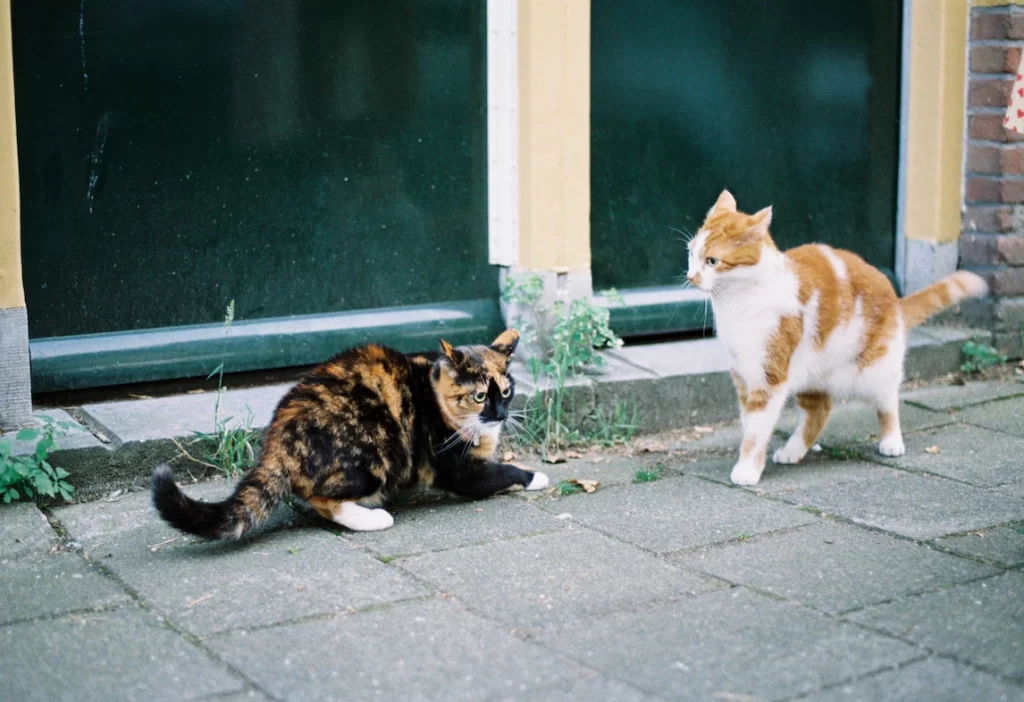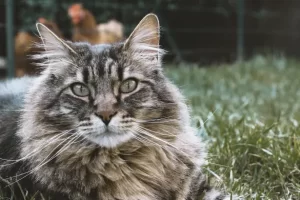Last updated on February 13th, 2023 at 03:12 am

As a pet owner, you may need multiple cats in your home to give your cat company or for other reasons. However, it’s hard to predict how well a specific pair or group of cats will eventually get along. In this article, we will find out the reasons some cats don’t like each other when they first meet, some aggressive behaviors they may portray towards each other, and some tips to help cats get along when you introduce one cat to another.
Why does a current cat in the house not like a new cat?
Cats frequently fear other cats
Cats are fearful creatures, which can be seen in their interaction between home and wild cats. Outdoor cats live in social groupings and are aware of who is a part of them; they frequently assist one another. However, when approaching non-members, they may be fearful, especially when the large cat and the group have tiny kittens. It also applies when a new cat is introduced to the home, as the resident feline may hate them out of fear.
Invasion of the cat’s space
Your cat may hate the new cat because they feel that another cat is invading its space. It can happen if one or both cats start acting aggressively toward their preferred resting location, litter box, and food bowls. Therefore, your cat will act aggressively and hatefully towards the new cat.
Aggression behaviors between the two cats when they first meet
Defensive aggression
When a feline feels he cannot flee an attack, he will act defensively to defend himself. It can happen due to another cat’s attack. Therefore, having a new cat can result in the two cats fighting because they are both trying to be defensive. Kneeling with the legs tucked underneath the body, tilting the ears backward, concealing the tail, and sometimes rolling just a little to one side are examples of defensive positions. Since it’s not meant to deter an attack from another cat, this position differs from the submission stances displayed by dogs. You run the risk of inciting an attack if you keep approaching a cat who is standing in this position.
Intermale aggression
Typically, older male cats will threaten and occasionally engage in combat with other males. You can take this action in an attempt to seduce a female or to climb the social dominance hierarchy of cats. There is a lot of bodily posturing, staring, stalking, yowling, and screaming involved in this kind of aggressiveness. Suppose one cat retreats and moves on, attacks are typically avoided.
In the event of an assault, the assailant typically leaps forward, aiming a bite at the opponent’s back of the neck, whereas the victim falls to the floor on his back and uses his hind legs to try to scratch and bite the belly of the attacker. The cats might roll around howling and biting, stop abruptly, pick up their posture, attack, or withdraw. Cats rarely cause serious harm to each other in this way, but you should always look for bruises and cuts that could become infected. Males who have not been neutered are far more inclined to fight in this manner than intact males and for that reason, you should find ways to help cats get along.
Redirected aggression
It is the kind of aggressiveness aimed against a different animal that wasn’t the one who originally evoked the action. A house cat, for instance, may observe an outside cat crossing the front yard while sitting over the window. He may turn and attack the other family cat seated near him by the window if he cannot fight the outdoor cat due to the inability to reach them. Redirected anger might take the form of an attack or a defense.
Territorial aggression
Felines are far more possessive of their territory than dogs are. When a cat perceives an intrusion into your cat’s area, territorial aggressiveness results. The cat might consider your entire neighborhood their domain, depending on where they spend their time. Both male and female cats can be very territorial. In this kind of aggressiveness, the intruder is pursued and ambushed, in addition to swatting and hissing when contact is made. When a new cat is introduced into a home, when a kitten reaches adulthood, or when a cat interacts with other cats in the neighborhood outside, territorial issues frequently arise. It is not unusual for a cat to be nice and tolerant to one cat in the family while acting aggressively and territorially toward another.
How to protect one cat from being harmed by the other
Provide the cats with a reason to get along with each other
Give cats a cause to enjoy each other to help them lose their fear or suspicion of one another. Give them something they want when the other cat is nearby or sees the other cat. Usually, this entails feeding the cats or giving them a treat. Positive connections can also result from playtime and grooming. It’s crucial to remember that this process could take a while and calls for consistency.
Ensure resources are adequate for all cats
Anything the cat wants, or needs is a resource. Litter boxes, food, and water bowls, scratching posts, playtime with humans, toys, and hiding places are a few examples.
Be alert to environmental changes that can make your cats feel less secure and at ease
Cats are particularly reactive to changes in their home environment. If they feel less secure there, this could lead to tensions between the cats. For instance, changes in routine, construction inside or outside the home, or the addition of new people or animals may make the cats stressed. Take steps to lessen the effects of these changes whenever you can to help cats get along.
Ensure the cats get ample playtime
When two cats chase each other, it’s frequently misconstrued as aggressiveness when, in fact, the cats are just trying to get their daily energy demands satisfied. Felines need a lot more energy. For cats, playing is a fantastic method to relieve tension. Cats tend to think that they are hunting when playing. Additionally, cats can increase their self-confidence while simultaneously using up their mental and physical energy.
Spay/neuter the cats
Cat aggressiveness is significantly reduced by neutering and spaying them. If one or more cats are intact, it is frequently impossible to stop violence between cats because of their natural territorial instinct.
Contact an expert cat behaviorist if you need extra help
It is crucial, especially when the cat exhibits redirected aggression. You should put the felines completely apart until both behave normally, at which point a gradual reintroduction is required. The best way to complete this process, which can be difficult, is with professional advice.
6 Tips to help cats get along when you introduce one cat to another
- Make a sanctuary space for your new cat
The first time you bring the new cat home, keep it in a segregated room and make sure they have access to their bed, litterbox, water, and food that can last them for a week or till they get to see your vet.
- Put their food on the opposing sides of the same door
Place the bowls of the two cats on the opposite side of the room’s door when you serve them their next food. It is intended that the cats connect by enjoying their meal in the other cat’s presence. Open the door just a bit so they may see each other while eating. And this can help cats get along quite seamlessly.
- Give your new cat room to explore
Place the resident cat in another room while the new cat is allowed to roam the house once it appears that the new cat is at ease in the new place, eating normally and using the litter box. It enables the new cat to interact indirectly with the current cat’s smell. Alternating their bedding during the night is an additional choice.
- Limit the initial time the cats spend together and observe their first contact closely
It is usual for animals to exhibit particular signs of fear or aggression, but you don’t want them to develop a pattern of fear or aggression that will be challenging to break. Return to step one and re-separate the cats if these behaviors get worse.
- In case they fight, create a distraction and separate them
If the two cats are not getting along and begin fighting, throw a towel towards them to create a distraction or make noises to keep them from fighting. Please don’t pick up the new cat while it is still exciting. Instead, lure it back to its sanctuary area and leave them to cool down for a few days. During introductions, avoid holding either feline in your arms since you can get bit/scratched if one cat exhibits hostile behavior against another.
- Allow controlled interactions between the two cats, keeping a keen eye out for any indications of stress or violence
Have a few treats or entertaining toys to distract the cats from each other if it appears that one of them is staring, fixating, or freezing on the other cat. They’ll learn from this once more that the other cat’s presence brings positive outcomes.
Conclusion
Above are some tips to help cats get along when you try to introduce one cat to another. When you bring a new cat to your house, this may provoke an adverse reaction from the resident. They may hate them due to fear. Cats may display aggressive behaviors around a new cat, which you should be looking for. If you notice the aggression, you can protect the new cat in multiple ways to keep them safe. It is crucial to make a good introduction between the two cats to create a good rapport between them. When you help cats get along faster it will also mean less aggression in the family.
Also read: 10 Reason Your Cat Meows At Night


